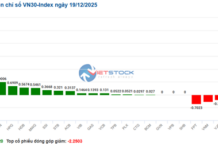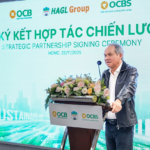
According to preliminary statistics from the General Department of Customs, Vietnam’s export value of bamboo, rattan, sedge, and carpet products in December 2023 reached over $71.3 million, an increase of 9.3% compared to the previous month. Overall in 2023, this group of goods earned Vietnam more than $733.2 million, a decrease of 10.4% compared to the same period in 2022. The narrowing decrease compared to 2022 in the final months of the year indicates a revival in exports.
This is a key export item in Vietnam’s agricultural products group that has helped Vietnam become one of the world’s largest exporters of bamboo and rattan products alongside China and the Philippines.

In terms of markets, the US remains the largest export market for Vietnam in 2023. In December, exports of bamboo, rattan, sedge, and carpets to the US earned more than $27.3 million, an increase of 26.3% compared to December 2022. Overall for 12 months, exports to the US reached $275 million, a decrease of 13.6% compared to the same period in 2022, accounting for 37.5% of total exports.
Japan ranks second in the market. In December, this country imported more than $5 million worth of these products, a decrease of 12.6% compared to December 2022. For 12 months, exports of bamboo, rattan, sedge, and carpets to Japan earned more than $71.3 million, a decrease of 10.6% compared to the same period in 2022, accounting for 9.7%.
India is Vietnam’s third largest market in this area, earning $38.2 million in 12 months in 2023, a decrease of 4.4% compared to the same period in 2022, accounting for 5.2%.

Compared to goods with billion-dollar export turnovers, Vietnam’s export of bamboo, rattan, sedge, and carpet products remains modest. Originating from small craft villages, these products have attracted attention and high appreciation from designers, importers, and consumers worldwide.
The implementation of free trade agreements such as RCEP, CPTPP, EVFTA… opens up many export opportunities for Vietnam’s bamboo, rattan, sedge, and carpet products; especially in large markets such as the US, Europe, Japan… due to the consumer culture of environmentally friendly and easily biodegradable materials in these regions.
Meanwhile, the rattan and bamboo weaving profession has almost disappeared in developed countries due to the inability to industrialize the production process. This is a golden opportunity for traditional craft villages in Vietnam.
Vietnam has a large bamboo area, up to 1.5 million hectares, distributed in most provinces nationwide. Vietnam’s bamboo resources are very rich and diverse, with hundreds of species, including some high-value economic species such as bamboo shoots, bamboo poles, bamboo mats, bamboo furniture, bamboo slats… Quang Nam province has the largest bamboo reserve in the country.
In December, China is also one of the countries experiencing strong growth in importing Vietnam’s bamboo and rattan products (nearly 69%). Remarkably, this country is intensively reviving bamboo forests to replace plastics.
Bamboo is one of the fastest-growing plants in nature, capable of growing into a forest in just 4 to 6 years, and can be sustainably used after planting. Deep processing in rural areas can significantly increase the profits of Chinese bamboo farmers. Therefore, China does not conceal its ambition to lead the global market in bamboo handicraft products.


































